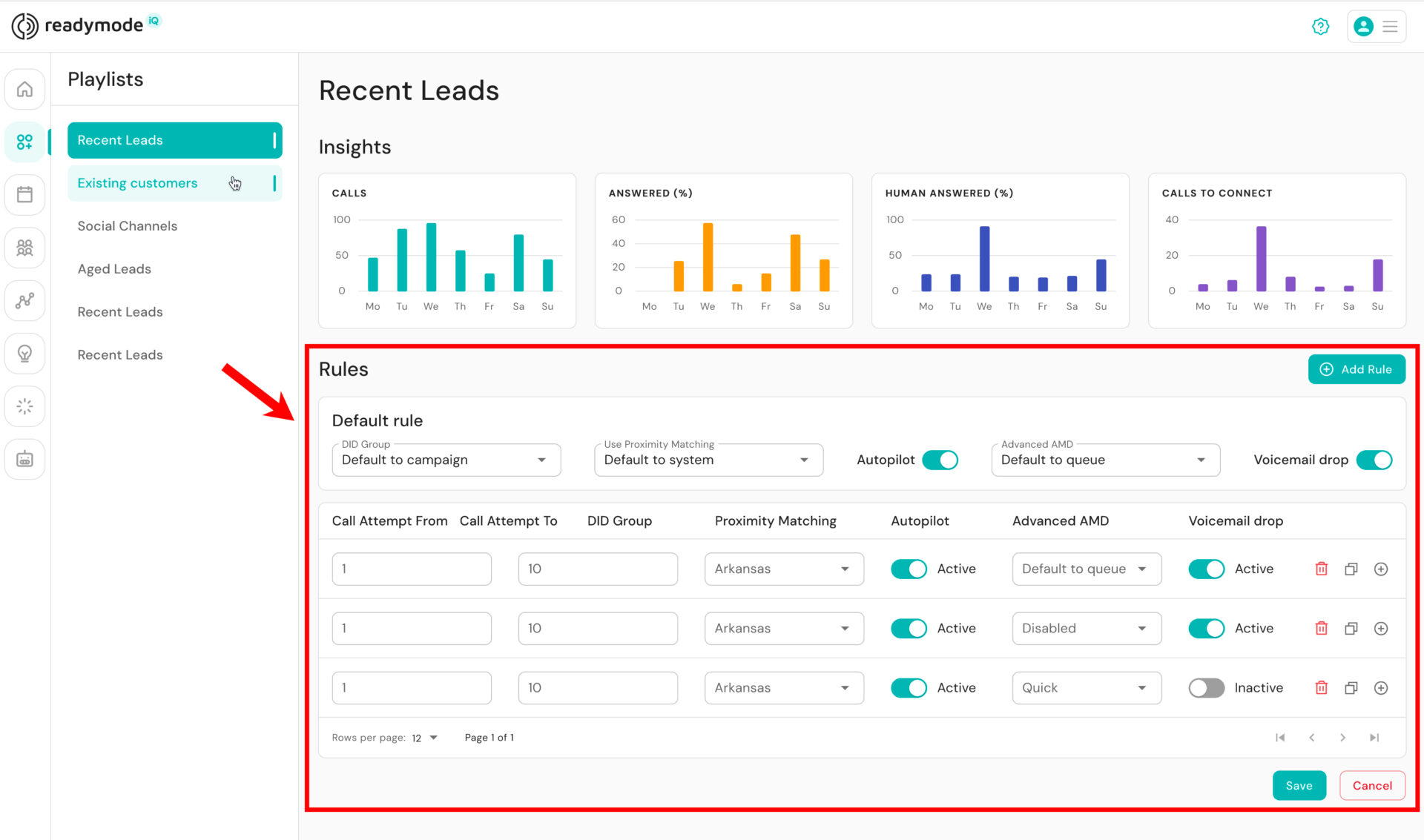Outbound lead generation is often misunderstood, even by experienced marketers and salespeople.
Mention cold calling, direct outreach, or email marketing, and you’ll hear objections like “You can’t push people into a sale” or “that’s such a 90s approach.”
But data shows outbound still works; it’s just evolving.
According to the 2024 State of Lead Generation report, top-performing marketers are moving away from spray-and-pray tactics and adopting needs-based, data-driven outbound strategies.
When outbound is aligned with buyer intent and timing, it feels helpful instead of pushy. It drives a predictable pipeline, scales faster than inbound alone, and often converts colder leads into your best customers.
In this article, we’ll break down what modern outbound lead generation really looks like and how you can use it to consistently drive high-quality leads.
What Is Outbound Lead Generation?
Outbound lead generation is a proactive sales and marketing strategy where you reach out to your ideal audience instead of waiting for them to come to you.
The goal is to approach people who might not know about your product or service yet, but based on research, you know they need it and have a problem you can solve.
Common outbound tactics include cold calling, cold emailing, PPC ads, and social media outreach. This isn’t the same as spammy, untargeted sales pitches. In fact, it’s the complete opposite.
Effective outbound strategies focus on identifying real needs and offering solutions that benefit the customer, not just rattling off product features. It’s about showing prospects you understand their challenges and are reaching out because you know you can help.
How do you only reach out to relevant prospects and avoid calling someone who doesn’t need your offer? This is where technology comes in.
For example, Readymode’s predictive dialer allows you to filter and prioritize contacts based on custom criteria, so you’re only reaching out to people who match your ideal customer profile (ICP).
You can segment lists by location, campaign, lead status, or any custom field, then automate call flows that focus your team’s time on leads who are most likely to convert. Both sales and marketing teams use this approach.
Sales usually handles direct outreach, including cold calls, DMs, and emails. Marketing supports the strategy with data-driven outbound tactics like paid ads, retargeting campaigns, and account-based marketing to get in front of high-fit leads before they even raise their hand.
5 Main Steps of the Outbound Lead Generation Process
A successful outbound strategy follows a clear, repeatable path. Here’s how it usually works:
- Step 1- Define your ideal customer profile: Start by identifying who you’re targeting based on industry, company size, job role, location, and key pain points. For example, if you sell commercial cleaning services, your ICP might be operations managers at office buildings with 50+ employees in urban areas.
- Step 2 – Build and segment your lead list: If you don’t have an existing customer base, source contact lists that match your ICP. Then segment by factors like region or lead source. If you serve both healthcare and retail, separating those lists helps tailor messaging for each.
- Step 3 – Launch personalized outreach: Craft targeted messaging and reach out via cold calls, emails, or LinkedIn. Focus on the prospect’s needs, not selling your offer. For instance, a home improvement company might call homeowners in high-storm areas with a script focused on roof damage prevention.
- Step 4 – Qualify the lead: Ask questions to confirm need, budget, authority, and timeline. If a prospect can’t make purchasing decisions, you may route them to nurture instead of sales.
- Step 5 – Follow up and close the deal: Use demos, limited-time offers, or free trials to move qualified leads toward conversion. Timely, relevant follow-up is key to sealing the deal.
Types of Outbound Lead Generation Approaches
Your outbound lead generation approach depends on several factors: your target audience, the nature of your offer, your business goals, and how quickly you need results.
At a high level, outbound strategies can be categorized in two important ways:
- Inbound vs. outbound lead generation
- B2B vs. B2C outbound lead generation
Each approach has its own strengths, best practices, and use cases. Let’s quickly break down how they differ.
Inbound vs. Outbound Lead Generation
Inbound lead generation is a long-term approach focused on building trust by attracting leads through helpful, relevant content that answers your audience’s questions. A typical inbound journey starts when someone searches online, finds your content, and signs up through a lead magnet like a free ebook or webinar.
Outbound lead generation is direct and fast-paced. You identify high-fit prospects and reach out via cold calls, emails, DMs, or ads. If your offer aligns with their needs, they book a demo, start a trial, or convert right away.
Used together, they create a high-performance pipeline.
Inbound nurtures awareness and credibility, while outbound takes control of outreach, engaging prospects who might not find you otherwise. Together, they drive both short-term wins and long-term growth.
B2C vs. B2B Outbound Lead Generation
Outbound lead generation looks different depending on whether you’re targeting consumers (B2C) or businesses (B2B). While the goal is the same, your challenges and strategies need to be different.
B2C outbound focuses on speed, volume, and simplicity. You reach large audiences through cold calls, texts, or ads with short, benefit-driven offers. Personalization is minimal, but messaging must be emotionally compelling.
For example, residential real estate agents or home service providers use outbound to quickly reach homeowners with time-sensitive offers.
The biggest challenges in B2C lead generation are low attention spans and high opt-out rates.
B2B outbound is more targeted and consultative. You’re reaching decision-makers with tailored, value-based messaging that speaks to business needs. This is common in commercial real estate, business software, or professional services like legal and accounting.
There’s a lot of back and forth, and the goal of your outreach is to win the prospect’s trust and set up a meeting or demo, instead of driving sales.
The top B2B lead generation challenge is getting past gatekeepers and maintaining trust during longer sales cycles.
How to Generate Outbound Leads: 4 Most Effective Outbound Lead Generation Strategies
There’s no one-size-fits-all approach to outbound lead generation. The best strategy depends on your industry, your target audience, and the type of offer you’re promoting. That said, some outbound tactics consistently outperform others when executed with the right tools and messaging.
Here are five of the most effective outbound lead generation strategies to help you build a steady pipeline, boost conversions, and grow faster.
Strategy #1: Cold Calling
Cold calling is the process of reaching out to potential customers by phone and pitching your product or service as the solution to their problems. When done right, it still delivers high ROI. A 2024 survey found that organizations across eleven different industries considered cold calling among their top three most effective outreach methods.
But cold calling only works if it’s smart, fast, and relevant.
- Calling the right person at the right time.
- Getting past spam filters and call blocks.
- Delivering a message that speaks to real pain points.
This isn’t possible without the right tech stack. To make cold calling work, you’ll need tools like a predictive dialer, lead filtering, caller ID reputation monitoring, and automated call cadences, all of which are built into Readymode.
Companies across industries use Readymode to run highly targeted, optimized cold calling campaigns. For example, VABizGrowth saw a 500% increase in contact rates using Readymode iQ features like caller ID reputation monitoring and Autopilot.
Autopilot enables you to automatically dial only from healthy numbers to avoid spam flags and improve connect rates. It also sets smart limits on call volume to protect your caller ID reputation over time.
Tips for Effective Cold Calling
Successful cold calling is targeted, well-timed, and focused on the prospect’s needs. Here’s how you can do it.
- Step 1 – Start with a clean, targeted list: Focus only on high-fit prospects. Segment by role, industry, or location to make your messaging relevant from the first word.
- Step 2 – Check your numbers’ health: If your numbers are flagged as spam, no one picks up. Use Readymode’s caller ID reputation monitoring to ensure you’re calling from clean, trusted lines.
- Step 3 – Use a predictive dialer: Manual dialing kills productivity. Readymode’s predictive dialer connects reps only when someone answers, boosting talk time and reducing dead air. It also includes multi-mode dialing options for preview, power and progressive dialing, so you can customize your approach for every sales strategy.
- Step 4 – Lead with value in the first 10 seconds: Skip the pitch. Instead, mention a relevant pain point or insight: “We’re helping solar providers reduce their lead costs by 30%. Can I ask how you’re currently sourcing leads?”
- Step 5 – Follow up strategically: Not every call converts immediately. Use custom call cadences in Readymode to automate smart follow-ups that stay compliant and consistent.
Want more tips? Read our detailed article on cold calling.
Strategy #2: Cold Emailing
Did you know that 80% of B2B buyers prefer being contacted via email? Cold emails still work, but to break through the noise, your emails must be personalized, relevant, value-focused, and brief. One of the most effective approaches? Lead with proof.
Here’s an example of a modern cold email that gets replies:
Subject: We helped VABizGrowth 5x their contact rates
Hi [First Name],
Just helped VABizGrowth increase contact rates by 500% in 30 days using smarter dialer automation and caller ID reputation monitoring.
If you’re struggling with low connection rates or flagged numbers, I’d love to share how we made it happen.
Open to a quick 10-minute call this week?
Choose any time convenient for you: [calendar link]
– [Your Name]
Since the case study highlights a company in the same industry—and likely a direct competitor—the prospect is almost guaranteed to be curious.
Readymode includes customizable email templates for different scenarios and sales funnel stages. You can personalize these templates using variables like customer name, location, and other tags.
Strategy #3: PPC Advertising
Google, Facebook, and LinkedIn see billions of users daily. PPC advertising lets you tap into that traffic by showing ads to people most likely to need your product or service.
But your goal isn’t to sell directly. Instead, you should offer value-first content like:
- A free demo
- A quick diagnostic quiz
- An industry-specific case study
- A problem-solution guide
The objective? Attract ICP-matching leads and get them to raise their hand. Here’s how the lead flow works in PPC marketing:
- The prospect clicks your ad and lands on a focused, conversion-optimized page.
- They fill out a form or request info.
- Their data is automatically sent to your CRM or directly into Readymode.
- Your team follows up within minutes by phone, email, or SMS.
Research shows that reaching out to a lead within a minute of inquiry increases conversions by 391%. Using Readymode’s integrations, you can auto-trigger calls to capitalize on this opportunity.
Strategy #4: Social Selling
Social selling is one of the most effective ways to warm up prospects before a call or pitch ever happens. It helps you build familiarity and trust through real, two-way conversations on platforms like LinkedIn. Your goal isn’t to go viral but to engage the right people in a meaningful way.
Instead of posting lengthy, overly polished content that no one reads, be human and focus on interaction.
- Ask thoughtful questions that spark real responses.
- Share brief personal experiences or client wins that feel genuine.
- Engage with posts from your target accounts—comment, react, and follow up.
- Start DMs with relevance, not a pitch.
This approach makes your name familiar and your outreach more welcome. When you slide into the DMs of people who’ve already interacted with you, they’re much more likely to respond.
From there, you can get them on a call or continue the conversation on LinkedIn.
Top Outbound Lead Generation Mistakes to Avoid
Even the best outbound strategies can fall flat if common mistakes go unchecked. Here are some of the biggest pitfalls and how to avoid them:
- Mistake #1 – No clear ICP: A vague or overly broad ideal customer profile wastes time and budget. Define specific criteria: industry, company size, role, pain points, and buying triggers. Quality beats quantity every time.
- Mistake #2 – Neglecting follow-up: Most conversions happen after the first touch. If you’re not following up, you’re leaving pipeline opportunities on the table.
With Readymode’s custom call cadences, you can automate follow-ups based on your conditions.

The system doesn’t call on its own, but it prompts your sales agents at the right time by loading the next scheduled lead into their dialing screen. That way, reps don’t have to remember who to follow up with or when—it’s all built into their daily flow.
- Mistake #3 – Relying on one channel: Outbound works best when it’s multi-channel. Combine cold calls with emails, social outreach, and paid retargeting to increase engagement and visibility.
- Mistake #4 – Not tracking performance: You can’t improve what you don’t measure. Track key outbound metrics like call connect rate, email reply rate, and conversion by source. Readymode tracks all customer data and helps you optimize call performance.
- Mistake #5 – Ignoring compliance: Failing to comply with DNC lists, TCPA, or carrier regulations can damage your reputation, or worse, land you in legal trouble. Know the rules for your region and use tools that help you stay compliant.
- Mistake #6 – Trying to sell instead of solve: Prospects tune out sales pitches. Lead with value, insight, or a shared problem, then guide them toward a solution.
Avoid these traps, and your outbound engine will run smoother, smarter, and far more effectively.
Use Outbound to Build Connections, Not Just Sell
Most people associate outbound with selling, and that’s partly true. But successful outbound starts with the belief that you’re bringing value to your prospects before they ever come to you.
You must truly believe that you can help. You need to know exactly what problem you’re solving, how you solve it, and why it matters. That conviction shows up in your messaging, your tone, and your follow-up. And it directly impacts how prospects respond.
So before you launch your next outbound campaign, keep these takeaways in mind:
- Outbound works best when it’s targeted, timely, and value-first.
- Cold calls and emails still perform—if they focus on solving, not selling.
- Define a clear ICP and segment your list.
- Use multi-channel outreach and follow up consistently.
- Avoid common pitfalls like poor compliance, low personalization, or one-touch outreach.
- Track what matters so you can keep improving.
Approach outbound like a conversation, not a conversion, and you’ll be one step ahead of the competition.
Jawad Khan
Jawad is a seasoned content marketer and freelance technology writer featured in some of the world's leading digital marketing, e-commerce, and software related publications. As an expert contributor, Jawad has written for startups and enterprises, including Fortune 500 companies, across various tech verticals.






